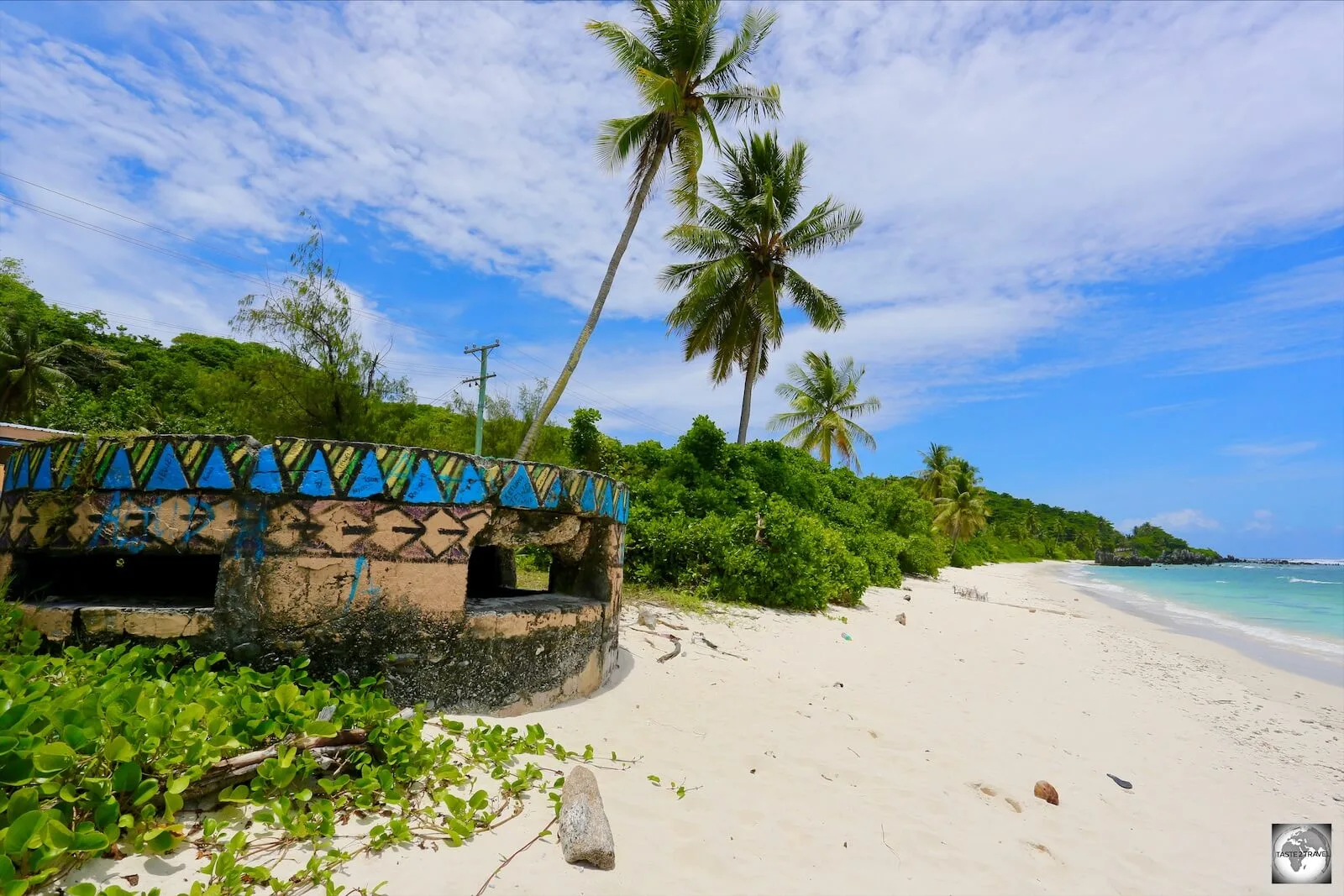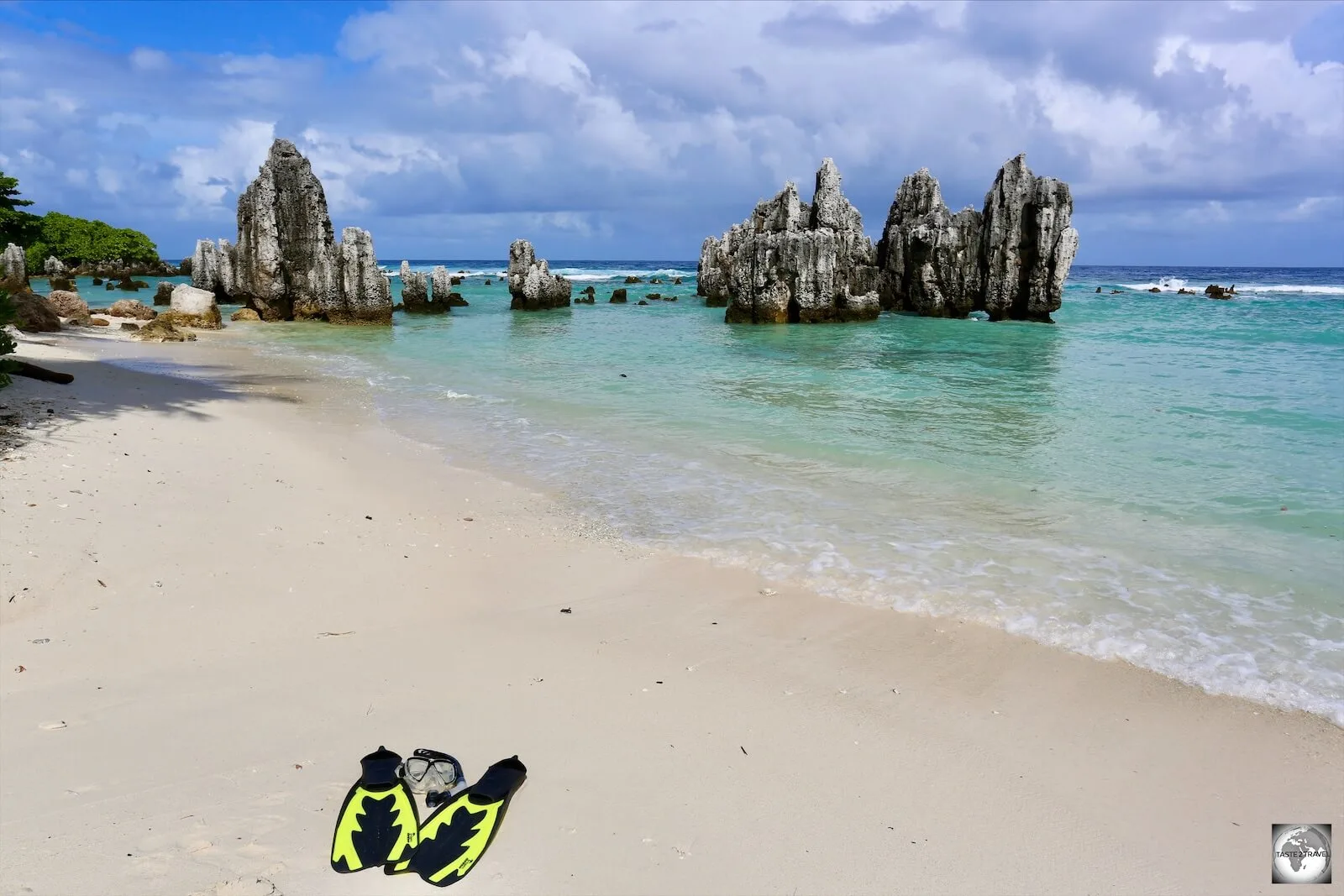A pretty raised atoll with a surrounding reef which is exposed at low tide, the Republic of Nauru is 19.3 kilometres in circumference and has a land area of 21 square kilometres. Most of the 10,000 population live on the narrow coastal belt.
A small isolated Central Pacific island, it lies some 42 kilometres south of the equator and is readily accessible by regular services on the island’s national carrier, Nauru Airlines, from major Pacific ports including Brisbane and Nadi.
The mining of phosphate has been the mainstay of the island’s economy since the 1900s, providing the locals with a steady source of income. Phosphate reserves are expected to be exhausted in the next few years.
The people
The Indigenous people of Nauru are believed to be of mixed Polynesian, Melanesian and Micronesian descent, with predominantly Micro/Polynesian characteristics. Their native language is Nauruan, though English is used for government and commercial purposes.
History
Nauru existed as an independent island society until it was annexed by Germany in 1888 and became part of the Marshall Islands protectorate. In 1900 a British company discovered phosphate on the island and negotiated with Germany for mining rights.
In November 1914 Nauru was seized by Australian troops and remained in British control until 1920.
In 1920, when the German colonies were distributed, a League of Nations Mandate was granted to Australia, New Zealand and Great Britain.

In 1947 the island was placed under United Nations Trusteeship and Australia resumed administration on behalf of the three partner governments. Nauru became an independent republic on 31 January 1968.
Nature
Native seabirds are plentiful. Vegetation includes pandanus, coconuts, Indigenous hardwood tomano trees, and frangipani. The climate is tropical with temperatures ranging between 24.4°C and 33.9°C, kept temperate by the sea breezes.
The sights
Nauru is made up of a raised central plateau surrounded by a fertile coastal fringe. The plateau, known as ‘topside’ is the site of mining and is, for the most part, made up of limestone pinnacles, a truly unique landscape.
Where to stay
There are two hotels on Nauru, the Menen Hotel and the Od-N-Aiwo Hotel, the tallest building in Nauru and run as a family business.
Getting around
Self-drive cars are available for a daily charge, plus a charge per kilometre. Both hotels operate a courtesy airport service.
Food and entertainment
Traditional feasts are popular. The Menen Hotel’s restaurant serves mainly western style food. The Bay Restaurant in Anibare Bay is a popular venue serving euro-Asian cuisine and popular with tourists and locals alike.
Activities
Nauruans play a number of sports, including weight-lifting and Australian rules football. Fishing, scuba diving, and snorkelling are popular. Deep-sea fishing is also available, and inquiries can be made to Capelle & Partner. Inquiries about tours of the mine area can be made at the Menen Hotel and through the Nauru Tourism office at the Civic Centre in Aiwo.
Shopping guide
Menen Hotel Boutique has gifts and books. Other stores sell a variety of food and goods. The Nauru Philatelic Bureau offers a range of sought-after philatelic issues of Nauru.


